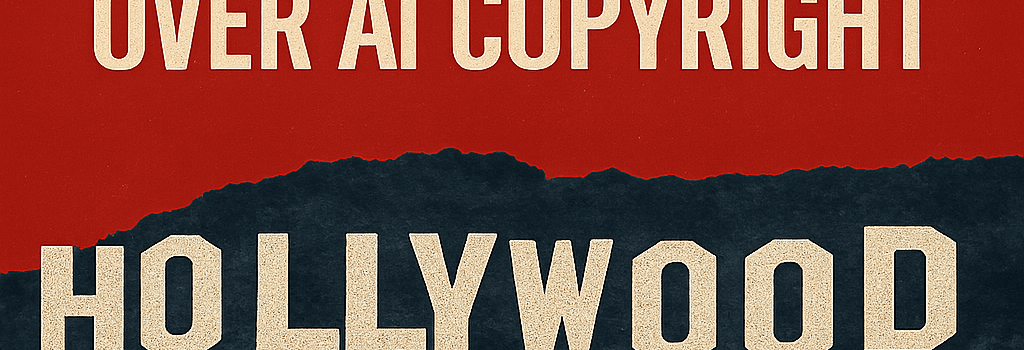Hollywood Studios Sue Midjourney Over AI Copyright

June 11, 2025 – Disney, NBCUniversal and other major studios have filed a copyright lawsuit against AI image generator Midjourney, alleging rampant unauthorized use of their characters in user-generated “AI slop.” This action marks the most consequential legal challenge to date against a generative AI platform.
Background of the Lawsuit
On June 11, Disney Enterprises, Lucasfilm, Marvel, 20th Century, Universal City Studios and DreamWorks Animation jointly filed suit in US District Court for the Central District of California. The studios accuse Midjourney of operating a “bottomless pit of plagiarism” by training its diffusion models on copyrighted images harvested from the web without permission.
- Defendants: Midjourney, Inc. and its CEO David Holz
- Plaintiffs: Disney, NBCUniversal, Marvel, Lucasfilm, 20th Century, Universal, DreamWorks Animation
- Claims: Direct and contributory copyright infringement, vicarious liability
Allegations and Evidentiary Examples
The complaint includes side-by-side comparisons of Midjourney outputs and the original assets, demonstrating near-pixel-perfect reproductions of:
- Darth Vader in new settings (beach, dystopian cityscape)
- Yoda performing everyday tasks
- Wall-E and Stormtroopers in integrated scenes
- Minions from Despicable Me and dragons from How to Train Your Dragon
Plaintiffs argue Midjourney used “bots, scrapers, stream-rippers and web crawlers” to ingest millions of images from fan sites, social media and stock archives—data later used to train a multimodal diffusion model with over 5 billion parameters.
Technical Mechanics of Image Synthesis
Midjourney’s service leverages a latent diffusion architecture in which:
- High-resolution images are encoded into a latent space via a VAE (Variational Autoencoder).
- Text prompts are transformed into embedding vectors using a CLIP model for cross-modal alignment.
- A U-Net denoising pipeline iteratively refines the latent tensors using stochastic differential equations.
- Final outputs are decoded back to pixel space by the decoder network.
This process runs on cloud GPU clusters, often with NVIDIA A100 GPUs, employing frameworks like PyTorch and accelerated inference via Triton Server.
Industry Reactions and Expert Opinions
IP attorney Jane Cohen of Morrison Foerster notes, “This suit will test the boundaries of fair use for generative AI. If courts deem the outputs substantially similar to the source images, platforms will face enormous liability.”
“Piracy is piracy, and the fact that it’s done by an AI company does not make it any less infringing.” – Horacio Gutierrez, Disney General Counsel
In February 2025, Getty Images settled with Stability AI over a similar claim; that case indicates defendants can reach multi-million dollar agreements to license training data retroactively.
Legal Implications and Future Outlook
The lawsuit arrives amid global debates over AI regulation. In the US, the Combat Online Infringement and Counterfeits Act is under discussion, while the EU’s AI Act proposes strict data governance for high-risk models. Key issues include:
- Whether unlicensed ingestion of copyrighted works violates DMCA safe-harbor provisions
- The scope of “transformative use”—does novel background or composition suffice?
- Potential for class-action suits by artists and other rights holders
Mitigation and Best Practices for AI Developers
To avoid similar lawsuits, AI platform operators should consider:
- Dataset audits and provenance tracking using blockchain or content fingerprinting
- Implementing robust watermarking or digital rights management (DRM) in model outputs
- Engaging in voluntary licensing agreements with major content owners
- Deploying prompt filters and real-time content moderation via zero‐shot classifiers
Conclusion
This landmark case could set a pivotal precedent for intellectual property in the age of generative AI. As courts weigh the balance between innovation and infringement, both studios and tech companies are bracing for a protracted legal battle that could reshape the landscape of AI creativity.